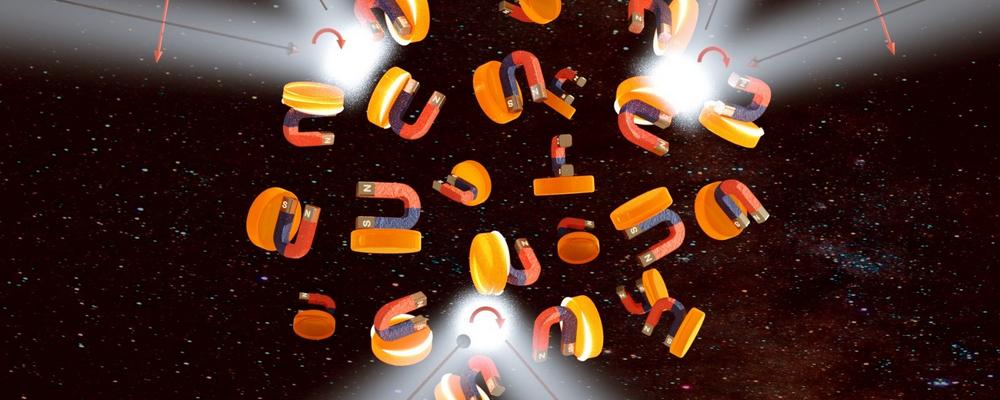The researchers at the Department of Physics, University of Gothenburg, jointly with Aalto University (Finland), University of Pennsylvania (USA) and Stanford University (USA) theoretically proposed to create a kind of metamaterial that has been beyond the reach of existing technologies so far. Unlike natural materials, metamaterials can be structurally tailored to have specific properties, meaning scientists can create materials with features on demand.
The new metamaterial takes advantage of the so called nonreciprocal magnetoelectric (NME) effect. The NME effect (also called Tellegen effect) implies a link between specific properties of the material (its magnetization and optical polarization) and the different components of an electromagnetic wave. The NME effect is negligible in natural materials, but scientists have been trying to enhance it using metamaterials because of the technological potential this would unlock.
A true one-way glass
"Tellegen effect and Tellegen materials have been theoretically proposed more than 70 years ago, but so far didn’t have any realistic applications," says Alexandre Dmitriev, professor and Head of the Department of Physics. "Most of the proposed Tellegen materials work in the microwave regime, so moving the effect into the visible spectral range was so far an insurmountable challenge. We solve this by proposing a designer material that is built on the metamaterials principles – i.e., not from regular atoms, but from meta-atoms that are much larger units of matter and can have very specific properties on demand. Crucially, we propose a very simple design that can be rather straightforwardly realized with currently available fabrication methods, bringing a practical Tellegen material working with visible light within reach."
The new material opens intriguing applications that would otherwise need a strong external magnetic field to work – for example, creating a true one-way glass. Glass that’s currently sold as ‘one-way’ is just semi-transparent, letting light through in both directions. Only when the brightness is different between the two sides (for example, inside and outside a window), it acts like one-way glass. But a Tellegen material-one-way glass wouldn’t need a difference in brightness because light could only go through in one direction. In practice it means fully transparent glass viewed from one side, and completely opaque – from the other. This could have substantial impact in solar cells, lasers, and just in every-day privacy-focused applications.
"Another truly fascinating aspect of the Tellegen metamaterial is that it is described essentially by the same electromagnetic equations that describe the cosmic dark matter and its constituent – an axion. This means that the experiments with visible light and Tellegen material can reveal something very fundamental about how the Universe works," says Alexandre Dmitriev.
